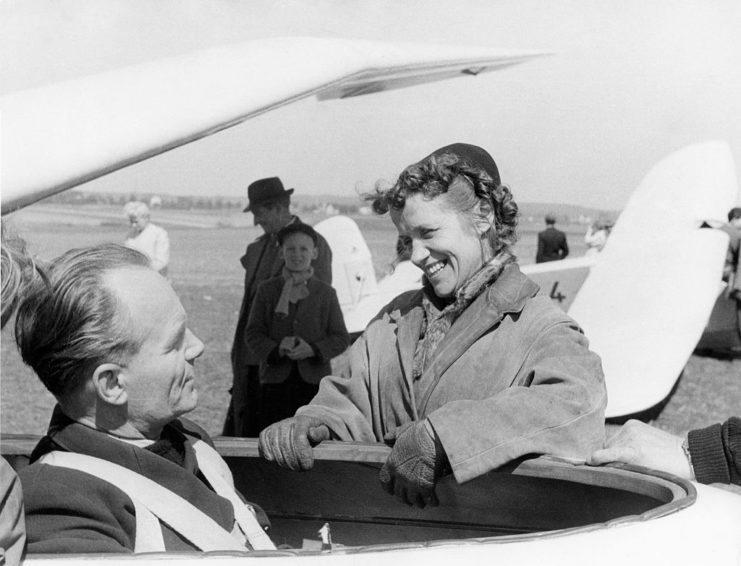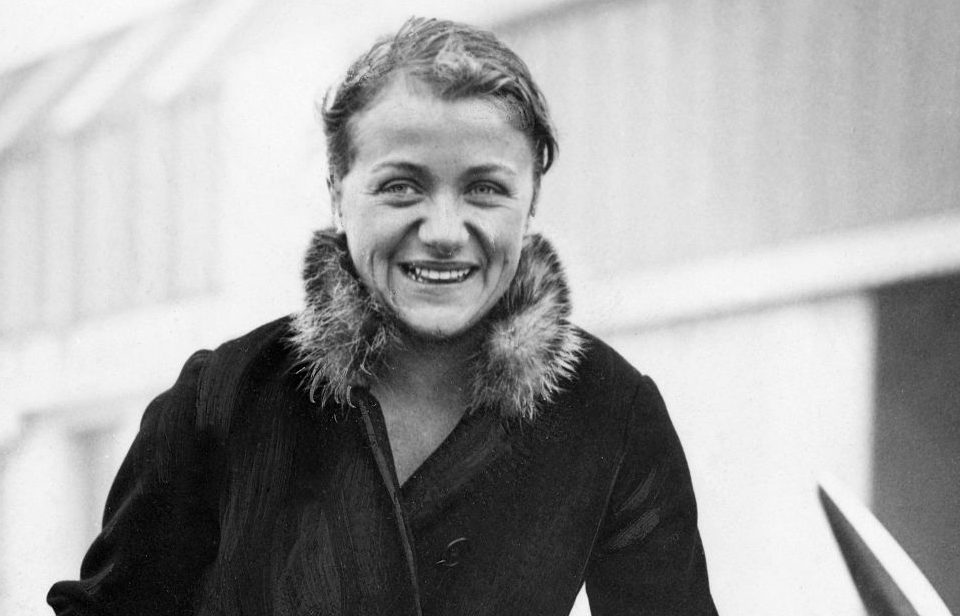As with other countries, Germany had a number of pilots to test out new aircraft. While the majority were male, there were some females who took to the skies. One of those was Hanna Reitsch, who was one of the Luftwaffe‘s star test pilots during the Second World War.
Hanna Reitsch’s early life and upbringing

Hanna Reitsch was born to a wealthy family in Hirschberg, Silesia in 1912. Her father was an ophthalmologist and her mother was a member of the Austrian nobility. Initially, she’d planned to follow in her father’s footsteps and enrolled in medical school. During this time, she took her first flight at a glider school in Grünau.
Reitsch proved to be talented and, in 1933, glider designer Wolf Hirth invited her to work for him as a stunt pilot. She dropped out of medical school and focused full-time on flying. That same year, she set a female endurance record by flying for 11 hours and 20 minutes. In 1934, she became the first female pilot to be awarded the Silver C Badge from the International Gliding Commission.
Hanna Reitsch becomes a test pilot

In 1934, Hanna Reitsch joined the Deutsche Forschungsanstalt für Segelflug (DFS), an organization that aimed to keep flying and gliding research under one umbrella. The following year, she began work as a test pilot and enrolled in Stettin’s Civil Airways Training School, where she flew Focke-Wulf Fw 44 Stieflitz biplanes, which many Luftwaffe pilots also trained on.
Reitsch also flew aircraft in a competitive manner, participating in the 1938 Cleveland Air Races. She continued to break barriers, as well, flying the Focke-Wulf Fw 61, Germany’s first controllable helicopter. For this, she was awarded the Military Flying Medal.
A propaganda tool for the German government

The government was more than happy to promote Hanna Reitsch as “proof” that Germans were superior. She was telegenic, blonde and smiled often, and she was more than happy to be used a propaganda tool.
Over time, Reitsch was given more and more opportunities within the Luftwaffe. She was one of the test pilots for the Junkers Ju 87 Stuka dive bomber and Dornier Do 17 light bomber, for which she received the Iron Cross, Second Class. She also proved her skills while testing the prototype for the Fieseler Fi 103R Reichenberg, a manned version of the German V-1 flying bomb.
After flying the aircraft on a number of occasions, she was tasked with training with flight instructors, later writing in her biography, The Sky My Kingdom: Memoirs of the Famous German World War II Test Pilot, “Though an average pilot could fly the V1 without difficulty once it was in the air, to land it called for exceptional skill, in that it had a very high landing speed and, moreover, in training it was the glider model, without engine, that was usually employed.”
Hanna Reitsch’s actions during World War II

Hanna Reitsch continued to test aircraft after the Second World War broke out. She was badly injured during a 1942 flight and while in recovery was awarded the Iron Cross, First Class. She also served as a close adviser to the Luftwaffe. After the German loss at the Battle of Stalingrad, she was sent to the Eastern Front to visit troops and fly the Fieseler Fi 156 Storch.
Reitsch also advised the German Führer. In 1944, she presented the idea of Operation Suicide to him, wherein German soldiers would “sacrifice themselves in the conviction that only by this means could their country be saved.” The plan never went into action. The following year, she became one of the last people to see the German leader alive. He gave her a cyanide pill, which she never ingested.
The pilot was captured by US forces in April 1945.
Hanna Reitsch’s later life

New! Want to become a trivia master? Sign up for our War History Fact of the Day newsletter!
More from us: Patrick Fleming: The Flying Ace Who Shot Down 19 Japanese Aircraft In Just Six Sorties
Hanna Reitsch was released in 1945. While Germans were barred from flying motorized aircraft, gliding was still allowed, so she returned to the sport. She participated in a number of competitions and continued to break aerial records. The pilot also spent time in India and Ghana, where she trained future gliders.
Reitsch passed away in 1979, at the age of 67. She never married or started a family.
